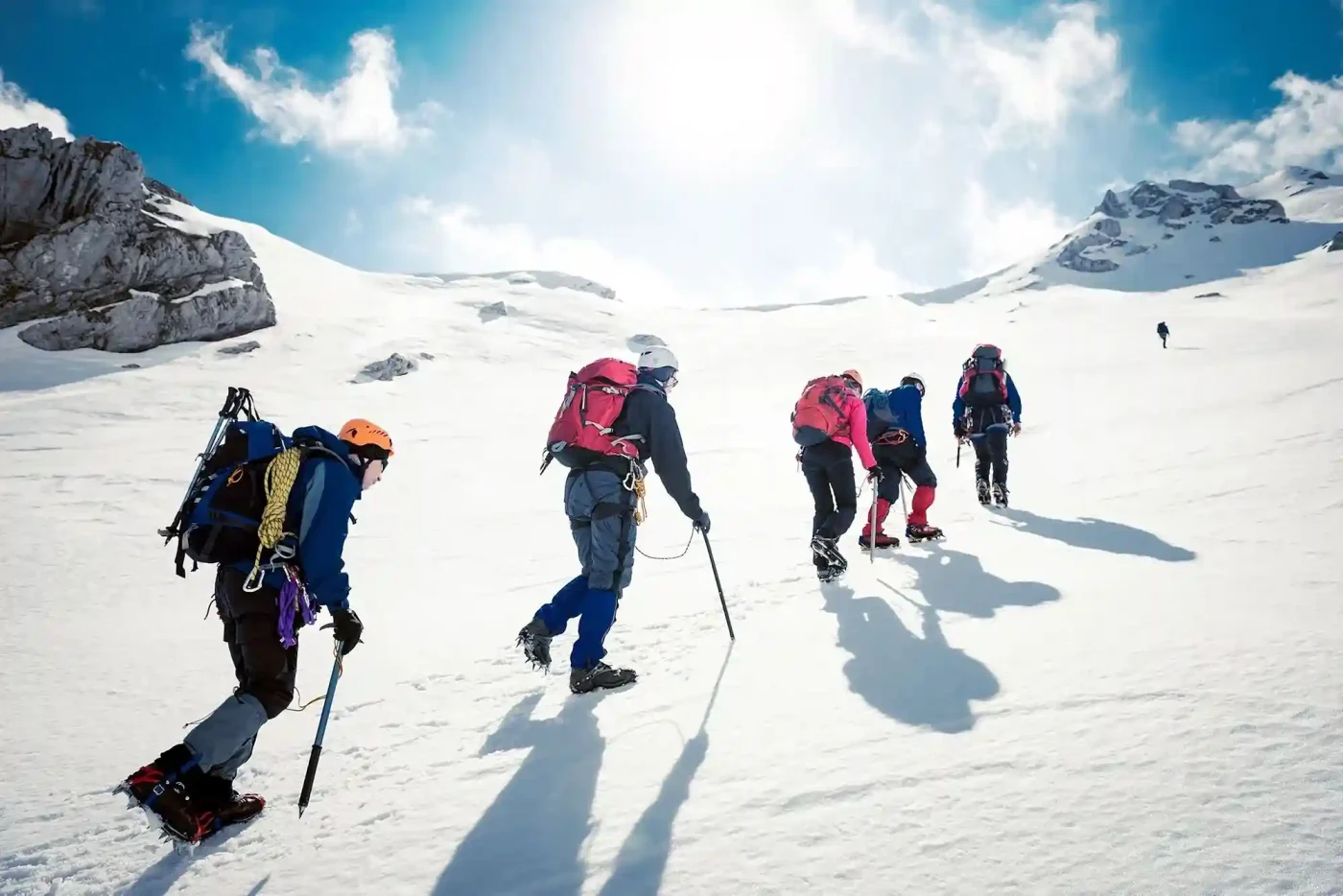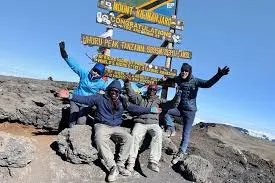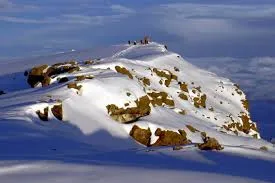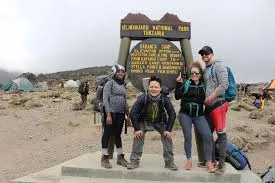How to Reduce Risks While Trekking Kilimanjaro
To reduce risks while trekking Kilimanjaro, pace yourself slowly to adapt to the altitude and minimize fatigue. Follow the “climb high, sleep low” principle and choose a route with enough acclimatization days. Stay well-hydrated, eat balanced meals, and listen to your body for early signs of altitude sickness. Always hike with proper gear, stay close to your guide, and respect safety briefings. This guide covers practical strategies to reduce risks, from training and gear selection to choosing the safest routes and seasons. Let’s dive into how you can conquer Kilimanjaro with confidence!
Plan Your Safe Trek Now
Understanding Kilimanjaro Trekking Risks
Climbing Mount Kilimanjaro, Africa’s highest peak at 5,895 m (19,341 ft), is a bucket-list adventure, but it’s not without challenges. Risks include altitude sickness, harsh weather, physical exhaustion, and injuries like blisters or falls. By understanding these risks and preparing thoroughly with Capable Africa Tours, you can significantly reduce dangers and increase your chances of a safe summit. Below, we break down the primary risks and how to mitigate them.
Primary Risks on Kilimanjaro
- Altitude Sickness: Acute Mountain Sickness (AMS), High-Altitude Pulmonary Edema (HAPE), and High-Altitude Cerebral Edema (HACE) affect 50–75% of trekkers to some degree.
- Extreme Weather: Temperatures range from 80°F in rainforests to -20°F at the summit, with risks of rain, snow, or high winds.
- Physical Strain: Long hiking days (6–8 hours) and a steep summit night can lead to exhaustion or muscle injuries.
- Trail Hazards: Slippery trails, loose rocks, and steep inclines increase the risk of falls or sprains.
- Logistical Risks: Poorly planned treks or unqualified operators can compromise safety and summit success.
Preventing Altitude Sickness
Altitude sickness is the most common risk on Kilimanjaro, with symptoms like headaches, nausea, and dizziness affecting up to 75% of climbers. Severe cases (HAPE or HACE) are rare but life-threatening. Capable Africa Tours prioritizes routes like Lemosho or Machame, which offer gradual ascents to improve acclimatization. Here’s how to minimize altitude-related risks.
Altitude Sickness Prevention Tips
- Choose Longer Routes: Opt for 7–8 day itineraries (e.g., Lemosho) to allow gradual ascent, reducing AMS risk by 20–30% compared to 5–6 day routes.
- Hydrate Constantly: Drink 3–4 liters of water daily to combat dehydration, a key AMS trigger.
- Pace Yourself: Follow the Swahili mantra “pole pole” (slowly, slowly) to avoid overexertion.
- Medications: Consult a doctor about Diamox (125–250 mg daily) to speed acclimatization, starting 1–2 days before the climb.
- Monitor Symptoms: Capable Africa Tours conducts daily health checks using pulse oximeters to catch AMS early.
Altitude Sickness Stats
| Condition | Symptoms | Prevalence | Prevention |
|---|---|---|---|
| Acute Mountain Sickness (AMS) | Headache, nausea, fatigue | 50–75% | Slow ascent, hydration, Diamox |
| High-Altitude Pulmonary Edema (HAPE) | Shortness of breath, cough | 1–2% | Gradual ascent, oxygen, descent |
| High-Altitude Cerebral Edema (HACE) | Confusion, ataxia | <1% | Immediate descent, oxygen |
Physical Preparation for a Safe Climb
Build a strong fitness base before climbing Kilimanjaro by focusing on cardiovascular endurance, leg strength, and core stability. Incorporate regular hikes, stair climbs, or uphill walking with a weighted backpack to simulate trekking conditions. Balance training with flexibility and mobility exercises to reduce the risk of injury. Aim to train consistently for at least 8–12 weeks prior to your climb, gradually increasing intensity. Below is a practical preparation guide to help you get fit and ready for a safe Kilimanjaro climb with Capable Africa Tours.
Training Plan
- Cardio (4–5 times/week): Run, cycle, or swim for 45–60 minutes to build endurance for 6–8 hour hiking days.
- Strength Training (3 times/week): Focus on squats, lunges, and core exercises to handle steep terrain and uneven trails.
- Practice Hikes (weekly): Hike 4–6 hours with a 5–7 kg backpack on hilly terrain to simulate trek conditions.
- Altitude Simulation: If possible, train at elevations above 2,500 m or use altitude tents to prepare for low oxygen levels.
- Rest and Recovery: Incorporate 1–2 rest days weekly to prevent overtraining and injuries.
Fitness Requirements
| Activity | Frequency | Duration | Purpose |
|---|---|---|---|
| Cardio (Run/Cycle/Swim) | 4–5 times/week | 45–60 min | Build endurance |
| Strength (Squats/Lunges) | 3 times/week | 30–45 min | Improve leg/core strength |
| Practice Hikes | 1 time/week | 4–6 hours | Simulate trek conditions |
Watch Safe Kilimanjaro Trekking in Action
See how Capable Africa Tours ensures a safe Kilimanjaro climb with expert guides, proper gear, and daily health checks in this video showcasing real trekkers on the mountain.
Choosing the Right Gear for Safety
Selecting the right gear is essential for both comfort and safety on Kilimanjaro. Start with sturdy, well-broken-in hiking boots to protect your feet and prevent blisters. Use trekking poles to reduce strain on your knees during steep ascents and descents. Always carry a reliable headlamp with spare batteries for early summit starts and low-light conditions. Don’t forget protective gear like gloves, gaiters, and UV-blocking sunglasses to handle the mountain’s diverse environments. Below is a detailed list of essential safety gear to ensure a secure and successful climb with Capable Africa Tours.
Essential Gear Checklist
- Footwear: Waterproof, mid/high-ankle hiking boots (broken in) and 3–4 pairs of merino wool socks to prevent blisters.
- Clothing Layers: Moisture-wicking base layers (3–4 sets), fleece mid-layers (2), and a Gore-Tex jacket/pants for rain and wind.
- Summit Gear: 800-fill down jacket and thermal underwear for summit night (-20°F).
- Accessories: Trekking poles, UV400 sunglasses, SPF 50+ sunscreen, wide-brimmed hat, and waterproof gloves.
- Other Essentials: 30–40L daypack, 3L water bladder, headlamp with extra batteries, and a sleeping bag rated to -15°C.
Gear Rental with Capable Africa Tours
Don’t want to buy expensive gear? Rent high-quality sleeping bags, down jackets, and trekking poles from Capable Africa Tours. Our sanitized, well-maintained gear ensures comfort and safety without extra baggage.
Selecting a Safe Route and Season
Choosing the right route and season significantly reduces risks. Longer routes like Lemosho or Machame offer better acclimatization, while dry seasons (January–March, June–October) minimize weather-related hazards. Capable Africa Tours recommends these for safer treks.
Recommended Routes for Safety
- Lemosho Route (7–8 days): Gradual ascent, 85–90% summit success, scenic and less crowded.
- Machame Route (7 days): Challenging but acclimatization-friendly, 80–85% summit success.
- Rongai Route (7–8 days): Remote northern approach, ideal for dry season treks, 80–85% success.
Seasonal Safety Breakdown
| Season | Months | Weather | Safety Pros | Safety Cons |
|---|---|---|---|---|
| Dry (Peak) | Jan–Mar, Jun–Oct | Clear skies, 0–80°F | Stable trails, low rain risk | Higher crowds |
| Wet | Apr–May, Nov | Heavy rain, muddy | Fewer trekkers | Slippery trails, poor visibility |
| Shoulder | Dec, early Jun | Mixed, light rain | Moderate crowds | Unpredictable weather |
Safety Measures with Capable Africa Tours
Capable Africa Tours prioritizes your safety with experienced guides, comprehensive health monitoring, and emergency protocols. Our all-inclusive packages ensure you’re supported every step of the way.
Our Safety Protocols
- Certified Guides: 1 guide per 2 trekkers, trained in wilderness first aid and altitude sickness management.
- Daily Health Checks: Pulse oximeters and symptom assessments to monitor AMS risks.
- Emergency Equipment: Oxygen tanks, first aid kits, and stretchers for rapid evacuation.
- Communication: Satellite phones and radios for constant contact with base camps.
- Eco-Friendly Practices: Safe waste management to protect you and the mountain environment.
Ready to Trek Kilimanjaro Safely?
Conquer Kilimanjaro with confidence alongside Capable Africa Tours. Our expert guides, safety protocols, and 85–90% summit success rate ensure a secure, unforgettable adventure. Book now to secure your spot!
- 85–90% summit success with longer routes
- Certified guides and daily health checks
- High-quality gear rentals for safety and comfort
- All-inclusive packages with meals and transfers
- Eco-conscious treks supporting local communities
Limited spots available for safe Kilimanjaro treks — book now to summit Uhuru Peak!
Plan Your Trek Now


